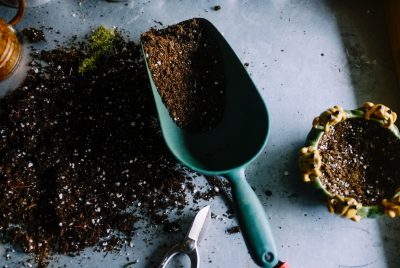Anyone Can Be a Perennial Gardener
As an enthusiast and advisor in the world of gardening, I’m here to debunk the common myth of brown thumbs and show you that anyone can become a successful perennial gardener. Many people believe that they lack the inherent talent or skill to keep plants alive and thriving, but I’m here to tell you that with a little guidance and a supportive community, you too can cultivate a beautiful perennial garden.
Before we delve into the common myths surrounding brown thumbs, let me assure you that gardening is not an innate talent but rather a learned skill. In this article, I will address the misconceptions, introduce you to our perennial gardening community, and provide helpful suggestions to help you become a successful perennial gardener.
Debunking the Myth of Brown Thumbs
One of the most prevalent myths is the notion of having a “brown thumb,” which implies an inability to keep plants alive. This idea often stems from past experiences of failed attempts or a lack of confidence. However, it’s important to remember that gardening is a journey of learning and experimentation. Even as an experienced perennial gardener, I still face challenges and setbacks along the way.
The Perennial Gardening Community
Fortunately, there is a vibrant and supportive community of perennial gardeners ready to help you on your gardening journey. Joining this community can provide you with a wealth of knowledge, inspiration, and encouragement. Whether it’s through online forums, local gardening clubs, or social media groups, connecting with fellow gardeners will expose you to diverse perspectives and experiences.
Seeking Help and Learning from Others
Don’t be afraid to seek help and learn from experienced gardeners! Reach out to the perennial gardening community with questions, seek advice on specific challenges you’re facing, and share your own experiences. The collective wisdom and support within this community will empower you to overcome obstacles and gain confidence in your gardening skills.
Helpful Suggestions for Successful Gardening
Now, let’s dive into some helpful suggestions to set you on the path to becoming a successful perennial gardener.
Choose the Right Perennials
Start by selecting perennials that are well-suited to your climate and growing conditions. Consider factors such as sunlight requirements, soil type, and water needs. Opt for resilient varieties known for their adaptability and disease resistance. Research different perennials and choose ones that align with your gardening goals and preferences.
Here are some perennial plants that you can consider growing to enhance the variety of foods in your diet:
- Fruit Trees: Fruit trees like apple, pear, cherry, peach, and plum are excellent choices for providing a range of fruits throughout the seasons. They offer a wide array of flavors and nutritional benefits, including vitamins, fiber, and antioxidants.
- Berry Bushes: Blueberries, raspberries, strawberries, blackberries, and currants are delicious and nutritious perennial options. These berries are packed with antioxidants, vitamins, and minerals, adding vibrant colors and flavors to your diet.
- Herbs: Perennial herbs such as rosemary, thyme, sage, mint, and oregano not only enhance the flavors of your dishes but also provide numerous health benefits. They contain essential oils, vitamins, and antioxidants, making them valuable additions to your culinary endeavors.
- Asparagus: Asparagus is a nutrient-rich perennial vegetable that can be grown in your garden. It is a good source of vitamins A, C, E, and K, as well as folate and fiber. Asparagus can be harvested year after year, providing a delicious and healthy addition to your meals.
- Rhubarb: Rhubarb is another perennial vegetable that offers a unique tart flavor. It is rich in vitamins K and C, as well as fiber. Rhubarb can be used in a variety of dishes, from pies and jams to sauces and savory recipes.
- Artichoke: Artichokes are perennial plants that produce edible flower buds. They are a good source of fiber, vitamin C, and antioxidants. Artichokes can be steamed, grilled, or added to various recipes, providing a unique and delicious addition to your diet.
- Perennial Salad Greens: Some perennial greens, such as sorrel, chives, and perpetual spinach, can be harvested continuously throughout the growing season. These greens add variety to salads, sandwiches, and cooked dishes, providing essential nutrients and flavors.
- Horseradish: Horseradish is a perennial root crop known for its strong and pungent flavor. It can be grated and used in sauces, dressings, and as a condiment to add a spicy kick to your meals. Horseradish contains compounds that provide potential health benefits.
- Flowers: Calendula, cosmos, marigolds, and zinnias are Nature’s purest form of eye candy! Flowers naturally create a more balanced garden, and I love this article here sharing tips on companion planting flowers in your vegetable garden.
By incorporating these perennial plants into your garden, you can enjoy a wide range of fresh and nutritious foods throughout the year. They not only enhance the diversity of your diet but also allow you to savor the flavors of homegrown produce. Experiment with different recipes and explore the culinary possibilities that these plants offer, enriching your meals with healthful and delicious options.
Understanding Soil and Sunlight Requirements
Healthy soil is the foundation of a thriving garden. Get your soil tested to determine its pH level and nutrient content. Amend the soil with organic matter, such as compost, to improve its structure and fertility. Additionally, pay attention to sunlight requirements for your chosen perennials. Some plants thrive in full sun, while others prefer partial shade. Place your plants accordingly to optimize their growth.
Proper Watering Techniques
Watering is a crucial aspect of perennial gardening. Provide consistent moisture to your plants, ensuring they neither suffer from drought nor drown in excessive water. Avoid shallow watering, as it encourages shallow root growth. Instead, water deeply and less frequently to encourage deep root establishment. Consider using mulch around your plants to retain moisture and suppress weed growth.
Mulching and Weed Control
Mulching serves multiple purposes in a perennial garden. It helps conserve soil moisture, regulate soil temperature, and inhibit weed growth. Apply a layer of organic mulch, such as wood chips or straw, around your plants. This will not only benefit their growth but also reduce the time and effort required for weed control.
Pruning and Deadheading
Proper pruning and deadheading help maintain the health and appearance of your perennials. Regularly remove dead or diseased plant parts to prevent the spread of diseases and promote new growth. Deadheading, the removal of spent flowers, encourages continuous blooming and prevents the formation of seed heads that may divert the plant’s energy.
Managing Pests and Diseases
Pests and diseases can pose challenges in any garden. Monitor your plants regularly for signs of pests or diseases and take prompt action if needed. Consider using organic pest control methods, such as companion planting or insecticidal soaps, to minimize the use of harsh chemicals. Healthy plants are often more resilient to pests and diseases, so maintaining proper care and nutrition is essential.
Long-Term Care and Maintenance
Perennial gardening requires long-term care and maintenance. Stay attentive to the changing needs of your plants throughout the seasons. Adjust watering and fertilization according to their growth patterns. Divide and replant overcrowded perennials to maintain their vigor. Regularly inspect for any signs of stress or nutrient deficiencies and take appropriate action to ensure the longevity of your garden.
Parting words
With the right mindset, guidance, and support, anyone can become a successful perennial gardener. Remember, gardening is a journey of discovery and growth. Embrace the challenges, seek help from forums, and apply the helpful suggestions provided. Witness the beauty and resilience of your own thriving perennial garden.
FAQs for a Perennial Gardener
Q1. How do I overcome the fear of failure in gardening? Gardening is a learning process, and failures are opportunities for growth. Start small, celebrate successes, and learn from challenges. Remember that even experienced gardeners face setbacks and learn from them.
Q2. Can I start a perennial garden in a small space? Absolutely! You can adapt perennial gardening into any space, whether it’s a small balcony, a tiny backyard, or even containers. Choose compact varieties and utilize vertical gardening techniques to maximize your space.
Q3. What are some low-maintenance perennial options for beginners? If you want to try flowering blooms, select low-maintenance perennials such as daylilies, coneflowers, and hostas. These plants are generally easy to grow, require minimal care, and offer beautiful blooms.
Q4. How can I attract pollinators to my perennial garden? To attract pollinators, incorporate a variety of nectar-rich plants with different bloom times. Plant flowers like bee balm, butterfly bush, and coneflowers. Provide a water source and avoid the use of pesticides.
Q5. Is it possible to have a perennial garden with year-round interest? Yes, it is possible to create a perennial garden with year-round interest. Choose plants with varying bloom times, consider foliage color and texture, and incorporate evergreen perennials or those with interesting seed heads for winter appeal.





